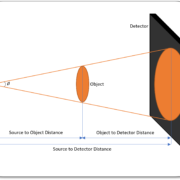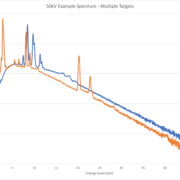X-ray Sources 101: Voltage, Current, and Power in X-ray Tubes

Introduction
X-ray tube power is defined as the product of beam current and excitation voltage. X-ray tubes work by accelerating electrons across a gap between a low voltage potential and a high voltage potential. As we learned in the article about X-ray Tube Topologies, there are several different ways to generate the required voltage. In this app note, we’ll assume we’re working with a positive polarity X-ray tube, meaning the electrons start at the cathode near GND potential and are accelerated towards a positive high voltage target on the anode. Three key specifications are important in picking an X-ray power supply and designing the electrical system to power your X-ray tube: excitation voltage, beam current, and tube power. A dedicated X-ray power supply (either integrated or stand-alone) is required to operate a tube, and an understanding of these three key variables and their interrelationship is crucial to selecting the right power supply.
Excitation Voltage
Excitation voltage is the potential difference between the cathode side of the tube and the anode side of the tube. This voltage sets the highest energy X-ray (in keV) that the X-ray tube is able to produce. The exact spectrum of X-rays generated by the tube is determined by a combination of the characteristic peaks of the target material and the Bremsstrahlung radiation produced by all X-ray tubes. X-ray tubes generally operate in the kV range, with a typical excitation voltage of around 50kV in analytical applications, and 100kV+ in imaging applications. MXR produces a range of tubes that can operate with excitation voltages of 4kV to over 100kV.
Beam Current
This is a count of the number of electrons moving from the cathode side to the anode side across the gap.
The electron source can be controlled to increase or decrease the amount of electrons emitted, thus controlling the beam current of the tube.
The more electrons are travelling across the gap, the more X-ray flux is generated when the electrons slam into the target material. As the beam current increases, the X-ray flux increases along with it. Micro X-Ray‘s X-ray tubes operate in the microamp (μA) and milliamp (mA) ranges.
Tube Power
In an electrical system power is defined as P=V×I, and X-ray tubes are no different. In the case of X-ray tubes, the tube power is defined as the excitation voltage times the beam current. X-ray tubes are highly inefficient machines, meaning that the majority of the power used is converted to heat, with only a small fraction of the total power being converted to useful X-rays. From an application standpoint, this means that the higher your system power, the more heat management will need to be designed into your machine.
X-ray Power Supplies
When selecting an X-ray tube power supply, it is important to understand all three of these values. For example, some X-ray power supplies may provide 50W and 10mA, but they can only do so at 5kV. If you need 50kV X-rays, then this power supply will not be suitable.
Another power supply may provide 50kV and 100W, but will have a 2mA maximum beam current limitation. While this is suitable for 50kV operation (50kV × 2mA = 100W), you will be limited to 60W maximum if you run the supply at 30kV (30kV × 2mA = 60W).
We’re always available to help you select the right tube AND power supply for your application. Contact us today to learn more about our X-ray tube, source, and power supply offerings!

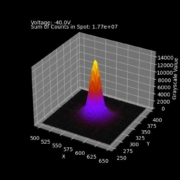
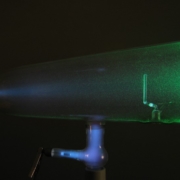
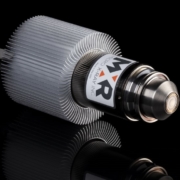
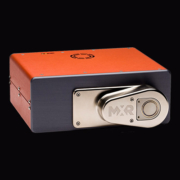 2020 Micro X-Ray
2020 Micro X-Ray